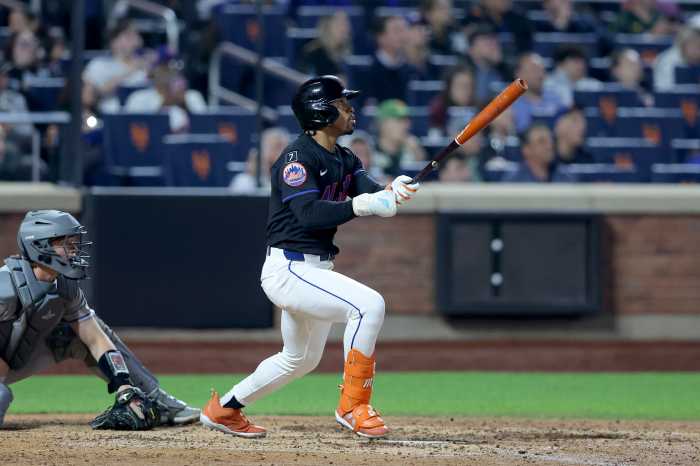As free agency reaches its doldrums, there is a budding sense of excitement for the new wave of talent that is getting ready to join the NFL. For the Philadelphia Eagles, the opportunity to add young talent looking to contribute to both the future and the present is at hand, particularly with three selections in the top 53.
What will the Eagles do in the 2024 NFL Draft?
Who will Philadelphia select? That, of course, is anyone’s guess. The better question is who they should select, which is the aim of this mock draft. Currently slated to make selections at pick 22, 50, 53, 120, 161, 171, 172, and 210, the Eagles have plenty of optionality in terms of negotiating their way up and down the draft board.
Will the Eagles make all eight selections? Likely not. Even more unlikely is that they select in their current draft slots. However, this exercise will be done today without any deals, as that will be saved for a future edition. If Philadelphia were to make their selections how they lie, here’s how their draft should break down:
Round 1, pick 22: Nate Wiggins, CB, Clemson
The Eagles’ need to add a strong starting outside corner is as apparent as arguably any other hole on the team. Darius Slay is coming off of an underrated season, but as he enters his age-33 season, the odds of him improving or even remaining at his current level are not overly encouraging.
Last season, Philadelphia saw encouraging production from multiple young corners, including Eli Ricks and Josh Jobe, but particularly 2023 fourth-round pick Kelee Ringo. The Georgia product started in four games for the Birds, showing off the potential to grow into a starting-caliber corner. However, the franchise still needs a player who can play on an island moving forward. Clemson’s Nate Wiggins undoubtedly fits that bill.
Listed at just under 6-foot-2, Wiggins has the prototypical height to play on the outside. While his slim build (185 pounds) may cause some initial concern, Wiggins’ solid length (74 1/4″ Wingspan) and athleticism help make him a frustrating opponent for receivers, as does his unwavering sense of confidence.
While he wasn’t much of a ball-hawk in college, with just three career interceptions, Wiggins was among the top shutdown corners, allowing just a 43.9 completion percentage.
Round 2, pick 50: Edgerrin Cooper, LB, Texas A&M
While corner is among Philadephia’s most prominent holes, linebacker is truly the most obvious, just one that the team has not historically put immense resources toward. That’s why there’s a bit of a hopeful air to this selection on two fronts.
First, the Eagles would be willing to select a linebacker in the first two rounds, something the team has not done since they selected Mychal Kendricks with the 46th pick back in 2012. Second, Cooper would have to fall to pick 50, which, based on the hype he’s receiving ahead of the draft, seems less likely by the day.
With a stellar combination of size, strength, speed, and skills, there’s little that Cooper should not be able to do at the next level. In a defensive scheme that relies on capable linebacker play, Cooper could provide the Eagles with a level of play at the position not seen in over a decade.
Howie and company may have to trade up from 50 if they want to land Cooper, which again works against the likelihood, but in a year that saw Roseman break his trend of not paying running backs, his streak of not drafting linebackers could end just as well.
Round 2, pick 53: Ruke Orhorhoro, DT, Clemson
Howie Roseman loves his defensive linemen. Not only that, but Roseman loves freakishly athletic D-linemen, and perhaps no player in this draft better exemplifies that concept than Clemson’s Ruke Orhorhoro.
A standout at the draft combine last month, Orhorhoro looks every part of an athletic monster on the line. Grading out with a Relative Athletic Score (RAS) of 9.92 out of 10, he finshed just behind Braden Fiske among defensive tackles.
Admitedly, a touch raw and not yet at the ideal weight to play inside (290lbs), Orhorhoro may be a bit of a project, but that’s not to say he couldn’t also contribute from Day 1. In a rotation spot behind Jalen Carter, Jordan Davis, and Milton Williams, Orhorhoro would have his fair share of oportunity while maintaining the opportunity to develop at a reasonable pace.
Speaking of Milton Williams, it wouldn’t be crazy to say that Orhorhoro could be a plus, plus version of the current Eagle. That is not to insult Williams, who has been a great contributor in his young career, but rather to represent the potential that lies in Ruke Orhorhoro. With the versatility to play 0-tech, 5-tech, and everywhere in-between, Ruke Orhorhoro was practically built to play for the Philadelphia Eagles.
Round 4, pick 120: Mohamed Kamara, EDGE, Colorado State
Newark, New Jersey’s own Mohamed Kamara, is another strong athlete for the Eagles defensive line. A bit undersized at 6’1″, Kamara will get bullied from time to time on the edge, but his quickness and low point-of-attack will also give him an advantage.
Kamara is unlikely to ever be a player with 10+ sacks, but there is certainly a path to him serving as a rotational depth piece—something the Eagles could certainly use, especially considering the possibility of a Hassan Reddick trade.
Round 6, pick 161: Luke McCaffrey, WR, Rice
The Eagles need a wide receiver three. The additions of Devante Parker and Paris Campbell are improvements over Quez Watkins, but the team needs more than a bandaid. While there are some significant talents at the wideout position in this draft, the biggest names are likely to be selected in the top 80, and the Eagles have greater needs within that range.
Luke McCaffrey is no small name, in fairness this is largley due to his brother Christian, but the younger McCaffery has plenty of skill in his own right. Possessing solid size at 6’2″ with extremely solid hands, he will provide some teams with a reliable option for years to come.
He clocked in with a 4.46 40 time at the Combine, but his game speed is not quite as impressive. Still, as he continues to improve his footwork and route running, which should help him take advantage of his raw agility, there is a path to a quality slot receiver in McCaffrey.
After adding their own version of a McCaffrey in the form of Saquon Barkley, the Eagles now land true-blooded McCaffrey at 161.
Round 6, pick 171: Curtis Jacobs, LB, Penn State
Not only do the Philadelphia Eagles have a talent problem at linebacker, they also have depth issues to boot. Adding Edgerrin Cooper with the 50th overall selection would certainly go a long way to addressing those concerns, but with recent addition Devin White just on a one-year deal, and the jury still being out on Nakobe Dean, the Eagles would be wise to add some depth to the position.
Penn State’s Curtis Jacobs may not be the perfect linebacker but he boasts solid straightline speed and is a capable passrusher. Missed tackles are a concern, but if he can clean his game up, his ability to rush the passer and contribute on special teams would be of great value.
Round 6, pick 172: AJ Barner, TE, Michigan
With the news that Jack Stoll was going to be leaving Philadelphia and heading up 95 to join the Giants, Grant Calcaterra has suddenly become the team’s defacto TE2. Drafting Barner does not change that, but it does give the Eagles a complimentary piece that can cover where Calcaterra does not shine, that being as a blocker. This is where Barner makes his bones.
He’s not a standout in the receiving game, but AJ Barner has a clear path to success at the next level. Standing 6’6″ at 250 pounds, Barner is a big man and loves playing like it, blocking with a sense of jovial purpose and pride rivaling a sane George Kittle.
He may never become an All-Pro, but if he continues to play to his strengths, AJ Barner has a long career ahead of him.
Round 6, pick 210: Tyler Owens, S, Texas Tech
This late in the draft, teams often search for players with as close to an elite skill as remains or who can provide a certain versatility of roles, particularly the ability to play special teams. Tyler Owens’ size and athleticism make him a prime candidate for such a function.
Unable to show off his speed at the combine due to a groin injury, Owens is a bit of a gamble as he does not have much experience and film behind him either. Of course, at pick 210, how much risk is there truly?
Owens made headlines as he explained that he does not believe in space. His ability to close in on opposing playmakers shows he keeps that same mentality on the field as well.
Owens’ groin injury could keep him off draft boards altogether, depending on the severity. The attractive unknown surrounding him however could prove to be enough to tempt the Eagles.



























